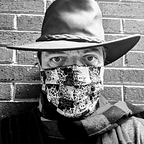Memorial Reformed (United Church of Christ), Maiden N.C (1887-present)
As a child I got to play with fire early in life at Memorial Reformed Church, which was originally built in 1887 as the first church in my hometown. It’s a “brick church with Gothic Revival and Neoclassical style design elements,” a “1914…two-stage bell tower with entrance,” and a 1936–1937 Sunday School Building where I had catechism. The original structure is believed to have been built by Salathiel Bolick — possibly Salathiel Augustus (1843–1899), a Confederate soldier who was apparently confined at Point Lookout. The church was built largely under the auspices of the Carpenter family, according to the National Register of Historic Places registration (1990), and “originally belonged to the Southern Synod of the Evangelical and Reformed Church, formerly the German Reformed Church.” It is now affiliated with the United Church of Christ (as it has been my entire life). My sister was married in this church before she and her husband temporarily moved to Oklahoma prior to his service in Vietnam.
“Being the first church in Maiden and closely related to the founding of the town, the church’s central location is significant. Despite the two additions to the structure, the overall integrity of Memorial Reformed Church remains intact.”
“The Biggest Little Football Town in the World” was originally incorporated (1883) as a cotton mill site and trading center run by H.F. Carpenter, Sons and Company in association with George W. Rabb — another well-known local Confederate soldier and son of my 2nd great aunt Rebecca Keener Rabb. In 1890, H.F. Carpenter, Sons & Co. would also purchase the nearby Keener lime property — “the product of which is noted for its building qualities and fertilizing properties” as late as 1922 according to the Gaston Gazette. The Carpenter family and George Rabb later ran several other cotton mills in town according to the Proceedings of the Annual Convention of the American Cotton Manufacturers Association for 1908.
The founding of Maiden was not an accident, but was the result of a definite purpose, the outgrowth of the business experience of several men. The late Henry Carpenter, whose large farm lay near St. James Lutheran Church, southeast of Newton, for many years a successful operator of a flour mill and general custom grinding business, a wool carding plant, a cotton gin and an immense tanyard. His three sons, L.A., D.M., and Perry A. Carpenter, had been associated with him, working for and with him in these enterprises from early boyhood. A partnership was formed, H.F. Carpenter, Sons and Company, the firm also consisting of George W. Rabb, well-known Confederate veteran. The purpose of his partnership was the building of a small cotton mill. The new plant began its operation with 1,000 spindles, producing coarse single yarns and production began in 1882. — Stephen Harris, Observer-News Enterprise, 1979.
The original Carpenter & Sons Cotton Mill is now gone, but the nearby Providence Cotton Mill is still around — now a wedding and event venue (see online promotional video). In 1885, D.M. Carpenter would replace another Confederate soldier and ambulance driver during most of the Civil War and one of my distant relatives — Alexander Keener — as one of the town’s first Commissioners.
Almost a hundred years later, the wife of M. Frank Carpenter— Sue Betty Michael Carpenter — would run her late husband’s department store in town and attend Memorial Reformed church with the author. She once gave us a Siamese cat with no tail — my mother is looking for the photo now… :)
According to the 1990 historical registration for Memorial Reformed it “has had numerous ministers over the years, many of whom have been shared with other churches.” However, the longest serving minister was another descendant of German immigrants named John A Koons (1919-1944 and again from 1948-1953). His photo is included in a copy of an old church flier or bulletin that my aunt recently showed me (image below), possibly from the local Methodist church that she attends.
My Methodist uncle didn’t really care to see Rev. Koons come around, but my Scots-Irish Reformed (UCC) mother loved him. She still likes to tell a story about how he used to walk for miles through the woods to other local churches to deliver services but always showed up wearing clean shoes. After a while, the various congregations began to wonder (and gossip) about it until finally someone asked him what was up. He explained that he always wore an old pair of shoes for the walk and carried his good shoes with him for services. He would change before he got to the church and leave his old shoes in the woods until his trek resumed — which explains why the preacher always wore clean shoes to church. But…who knows why the geese go barefoot?
If you enjoyed this post, please click the heart to recommend it. You might also enjoy my eBook about my German ancestors who settled in the Catawba Valley.
